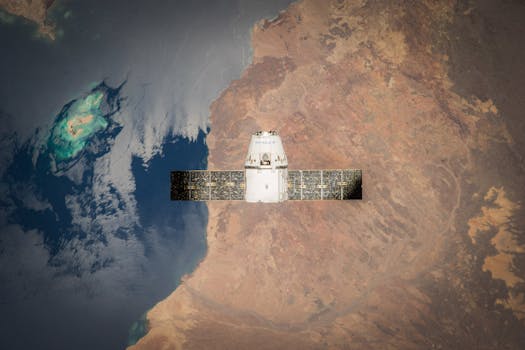Starlink: Revolutionizing Global Internet Connectivity with Satellite Technology

Starlink: Revolutionizing Global Internet Connectivity with Satellite Technology
Starlink is a Focus Keyword for the next generation of satellite internet technology developed by SpaceX, founded by Elon Musk. The goal of Starlink is to provide high-speed, low-latency internet connectivity to underserved and remote areas around the world, where traditional fiber-optic and cellular networks are not available or are unreliable.
The Starlink constellation consists of thousands of small satellites in low Earth orbit, each weighing around 400 pounds and measuring 10 feet long. These satellites are equipped with advanced technology, including Hall effect thrusters, star trackers, and antennas, to provide internet connectivity to users on the ground. The satellites are launched into space using SpaceX’s Falcon 9 rocket and are designed to be reusable, reducing the cost of launch and increasing the efficiency of the constellation.
How Starlink Works
Starlink uses a combination of advanced technologies to provide internet connectivity. The satellites in the constellation communicate with each other and with gateways on the ground, which are connected to the internet backbone. The gateways transmit internet data to the satellites, which then relay the data to users on the ground. The satellites use a phased array antenna system to steer and shape the beam of radio signals, allowing for high-gain and low-latency communication.
The Starlink system uses the Ku and Ka frequency bands, which provide high bandwidth and low latency. The system also uses advanced modulation and coding techniques, such as quadrature amplitude modulation (QAM) and low-density parity-check (LDPC) coding, to optimize the transmission of data. The satellites are also equipped with advanced beamforming and beam steering capabilities, allowing them to dynamically adjust the direction and shape of the beam to optimize performance.
Benefits of Starlink
Starlink has the potential to revolutionize global internet connectivity by providing high-speed, low-latency internet access to underserved and remote areas. The benefits of Starlink include:
Global coverage: Starlink provides internet connectivity to anywhere in the world, including remote and underserved areas.
High-speed: Starlink offers speeds of up to 1 Gbps, making it suitable for applications such as streaming, online gaming, and video conferencing.
Low latency: Starlink’s low Earth orbit satellites reduce latency to around 20-30 ms, making it comparable to fiber-optic networks.
Reliability: Starlink’s satellite constellation provides redundancy and backup, ensuring that internet connectivity is always available.
Affordability: Starlink’s reusable rockets and advanced technology reduce the cost of launch and increase the efficiency of the constellation, making internet connectivity more affordable.
Challenges and Limitations
While Starlink has the potential to revolutionize global internet connectivity, there are also challenges and limitations to consider. These include:
Interference: Starlink’s satellites operate in the same frequency bands as other satellites and terrestrial systems, which can cause interference and reduce performance.
Atmospheric conditions: Weather conditions such as rain, fog, and clouds can affect the performance of the Starlink system.
Regulatory issues: Starlink must comply with regulations from various countries and organizations, which can be complex and time-consuming.
Cost: While Starlink’s costs are reducing, the initial investment for the user terminal and subscription fees may still be prohibitively expensive for some users.




